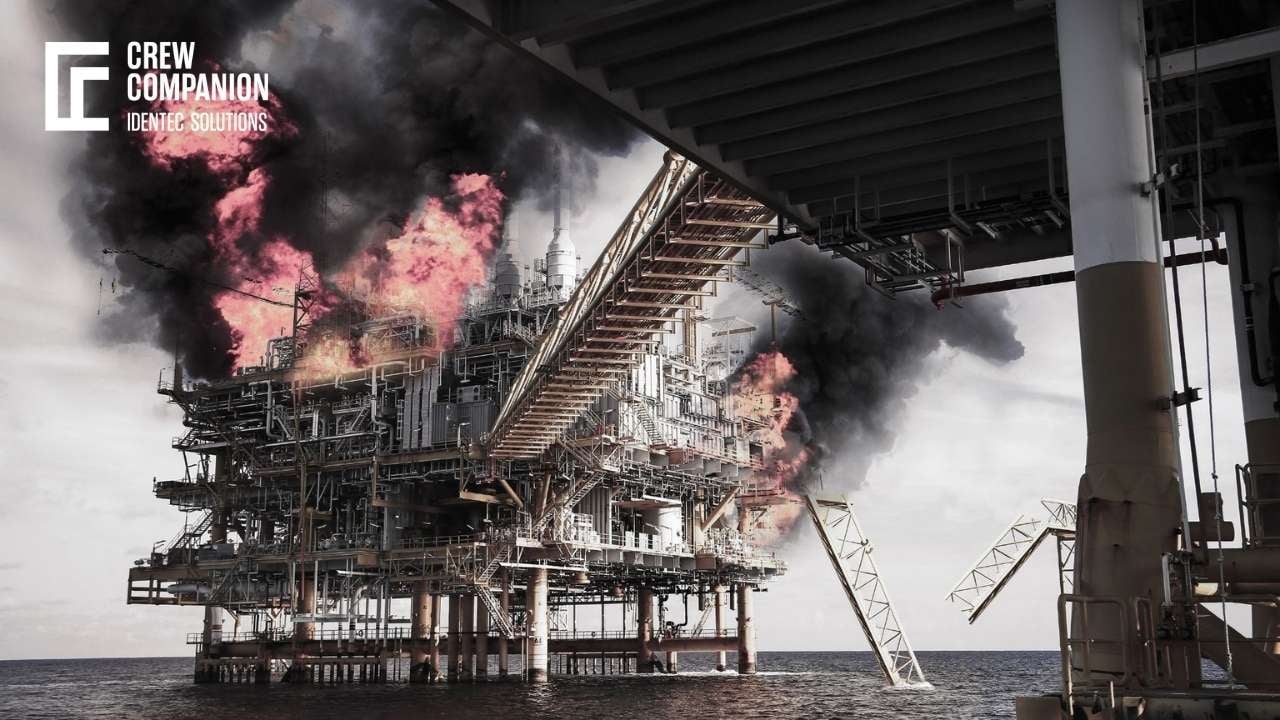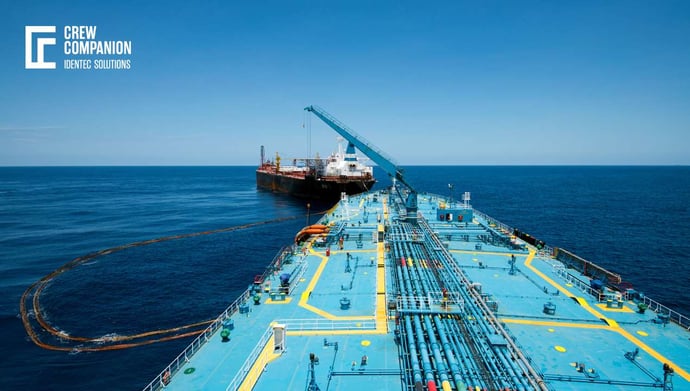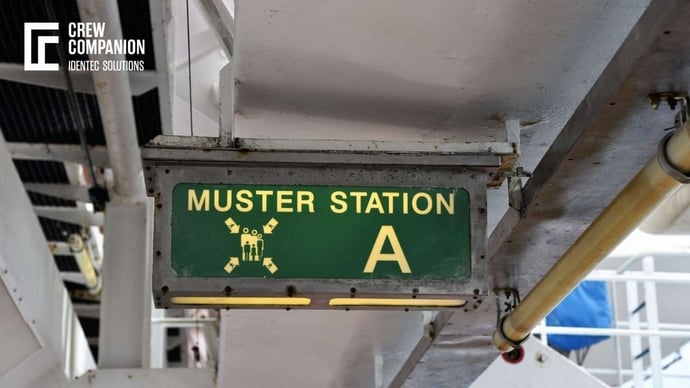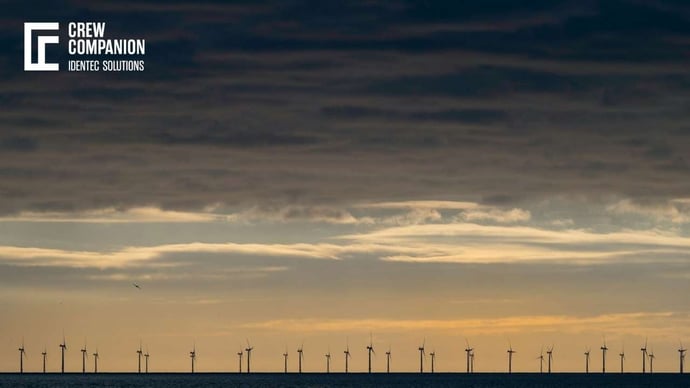How to integrate rfid mustering in an offshore safety concept?
| Written by David Gordon

No video selected
Select a video type in the sidebar.
OFFSHORE SAFETY: MUSTERING AS A CHALLENGE
In an emergency, the crew of an offshore rig is instructed to muster. Depending on their tasks, mustering can happen at specific locations for specific tasks (e.g. fighting fires, conducting search and rescue, occupying command posts) or to muster in evacuation areas. Once the word is given to abandon the offshore installation, all personnel head toward the lifeboat section and call there to board the assigned rafts.
Read more about Emergency Response Offshore...
As we learned from the most recent rig catastrophe, the Deepwater Horizon explosion in 2010 in the Gulf of Mexico, mustering is, simply said, challenging. The extreme circumstances of evacuating the rig - namely raging fire, intense heat, explosions, thundering noise, injured crew members, blocked pathways, and lifeboat sections - led to inaccurate mustering and an unknown number of missing people. This could have been avoided with an RFID mustering solution's reliability and intuitive nature.
One of the main challenges of the Deepwater Horizon disaster was the loss of assigned muster areas, respectively, lifeboats and blocked pathways. As the responsible muster takers weren't the first at their mustering stations, it became difficult to establish an accurate overview of mustered personnel and understand who was still missing and where. In addition, in a stressful situation, humans may act irrationally and individually, worsening the chaos and making the task for the commanding officers even more challenging to do the right thing.
To this day, many offshore rigs and other vessel-based procedures rely on a paper (and phone)-based muster system to account for staff and visitors aboard the rig at any time. But, as we have witnessed from the Deepwater Horizon disaster, there are several problems with this process, for instance:
- First, it relies on paper that could be outdated and needs to be printed and distributed as it changes.
- Second, it has the potential for human mistakes.
- Third, it is demanding and slow to identify who is missing when a muster doesn't match.
Paper&pen based solutions are troubled by these problems. They are either too slow or simply not trustworthy enough in the first place:
- The total count method is based on the idea that each muster station counts the personnel arriving at the muster station. If the number corresponds to the muster list, all is good. If not, the information gathering with other muster stations about potential whereabouts.
- The T-card system is simple in theory but difficult in a stressful evacuation: mustered personnel at their lifeboat would flip over their card with their name to indicate their presence. If the crew can't reach their assigned muster point, it won't work.
- Electronic fingerprint mustering is another solution but fails as it is not reliable enough.
(Continue reading about Emergency Response Management)
RFID MUSTERING IN A NUTSHELL
Improving accuracy and speeding up the process of accounting for everyone on the rig, projects were initiated that would eventually lead to an automated emergency mustering solution. The goal is a reliable system that provides full timely and proper muster.
In addition to basic needs such as muster swiftness and cost-effectiveness, criteria for a new system includes the system's ability to account for individuals that are not at their assigned muster point. When people are unable to get to their 'regular' muster location during a real emergency, this becomes the most challenging thing to manage.
Ease-of-use is an additional criterion for an electronic muster system, allowing new crewmembers to operate it within minutes of being on board if required. It should be robust and run in case of any single or, in some cases, multiple defects. In addition, such a system should quickly transmit the needed information in a comprehensible form to the command team on the vessel's bridge or to the rescue operation team onshore and the muster takers at the individual muster locations (continue reading about "mobile mustering").
These criteria are met with an RFID mustering solution. Based on three typical emergencies, the characteristic features of RFID mustering can be:
Limited emergency
As an emergency develops, the situation can be brought quickly under control. Nevertheless, a mustering process is triggered to learn about the whereabouts of personnel and consequently to deploy actions without harming the crew's safety. Therefore, in an emergency like this, the first step is to take an immediate muster as quickly as possible.
Extended emergency
If the attempt to control the situation fails, steps must be taken to move people to a separate area and have to be mustered again. This could happen numerous times in a brief period. Within an hour or two, you might need to do a full muster two or three times before you decide to abandon the ship.
Abandon Ship
At any point, the captain may determine that the situation is out of control and decide to call for an 'abandon ship'. This can happen immediately, but the problem may also escalate. Abandoning a ship is the last resort. At this point, each person goes to their assigned lifeboat muster area if possible or to the closest one they can safely reach. One last muster is done to ensure all crew are accounted for before boats are loaded and sent off on the captain's orders.
An RFID mustering solution must handle all three scenarios and includes personal tags and a solid wireless infrastructure to keep the devices online for insight into the complete muster progress from anywhere. The individual tag (transponder) allows to quickly identify and account people at one of several muster points throughout the rig, based on the emergency situation and where the person is located at the moment of the incident. In addition, it records the last position and direction of an individual crew member.
From the bridge or other rig areas, visibility into the rig muster is immediate through a screen display, without phone calls, radio, or physical headcount. As a backup, if a person is not wearing their tag, their name can be picked from the touchscreen device when checking in to a muster point.
One of the criteria for an RFID mustering solution is to quickly share required information to the command team on the bridge in an understandable form. This can be accomplished through a large master screen that permits easy tracking of each muster site and where personnel can monitor the progress of the ongoing muster in real-time. This is one of the most vital features of the system - the availability of real-time updates and immediately identifying the individuals that have not mustered on the master screen.

BENEFITS OF RFID MUSTERING
In short, an RFID mustering process delivers a faster, more efficient, and more reliable way to account for people than the previously used methods. It provides real-time understanding and better visibility to where people are located, empowering people in charge to make better-informed decisions. Collective, real-time information is available anywhere, resulting in greater insight for everyone involved. This precision and accessibility to location and headcount could mean the difference of several lives when presented with a real crisis (see more about worker safety monitoring).
One of the vital advantages of RFID mustering versus pen&paper approaches is data: You can identify them immediately if people are missing. Consequently, the commanding officer can focus its efforts on addressing the emergency and automatically do the mustering.
The flexibility of relocating from one muster point to the next is one of the essential features of RFID mustering solutions. The system automatically removes crew from previous muster locations and assigns them to a new site. Besides experiencing 20-25% faster muster time on average, the most significant benefit is maybe the ability to see how many people have called in each specific location and their names. For a captain, mustering during drills and emergencies becomes nearly stress-free.
FAQ
What are the main challenges with traditional mustering systems during offshore emergencies?
Traditional mustering systems on offshore rigs often rely on manual methods like paper lists, phone calls, and physical headcounts, which are slow and prone to error. These systems fail to provide accurate and timely information about personnel in stressful and chaotic situations, such as the Deepwater Horizon disaster. Blocked pathways, destroyed muster points, and missing muster takers make it nearly impossible to gather an accurate account of who is present and who is missing. Furthermore, traditional methods cannot adapt well when individuals cannot reach their designated muster points, leading to confusion and delays. The slow pace of manual counting can result in missed people, increasing the risk during emergencies.
How does RFID mustering improve safety and efficiency on offshore rigs?
RFID mustering systems greatly improve safety and efficiency by automating the accounting process for personnel during emergencies. Each crew member has a personal RFID tag, allowing the system to track their location in real-time. This enables immediate mustering, even when individuals cannot reach their assigned muster points. RFID technology provides the command team with real-time updates on the whereabouts of each person through an easily readable screen, eliminating the need for manual counts or phone-based checks. This system is faster, more accurate, and more reliable, allowing for a 20-25% reduction in muster time, ensuring that critical decisions can be made swiftly. It also offers the flexibility to move personnel between muster points without losing track of who is where.
TAKEAWAY
The integration of RFID mustering into offshore safety concepts adds great value to the effectiveness of emergency response procedures. Conventional systems, which apply a pen-and-paper approach, often prove too slow and unreliable when personnel are under life-threatening conditions. RFID mustering allows real-time personnel tracking and automates most processes, resulting in a more accurate and quick account of personnel, thus minimizing loss of life. With real-time data and adaptability, RFID solutions can help commanding officers make fast and more informed decisions to ensure safety, even in the most hazardous situations.

Are you interested to learn more about our RFID-based, emergency e-mustering solution? Meet Crew Companion.
Sources:
(1) https://industrial-compliance.co.uk/integrating-electronic-mustering-in-an-offshore-safety-concept/
(2) https://www.researchgate.net/publication/309437345_An_RFID_model_for_improving_workers'_safety_at_the_seaport_in_transitional_environment
Note: This article was updated on the 4th of October 2024





